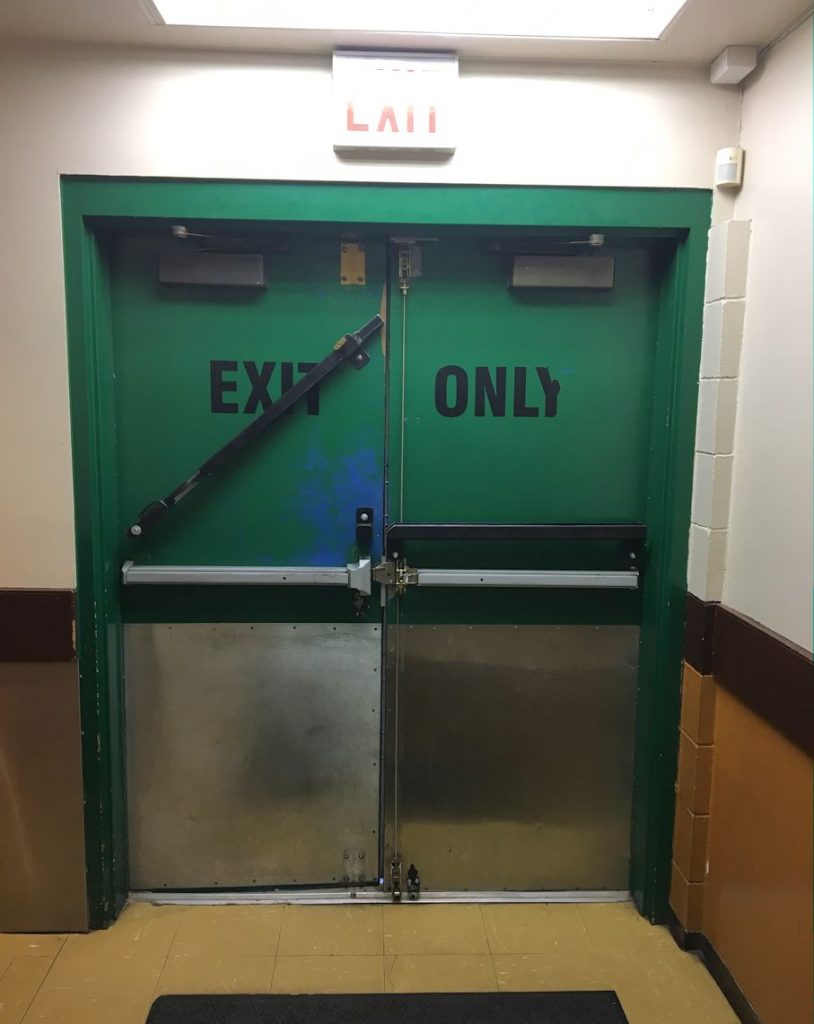Why is it that when something goes wrong with the existing hardware, some facilities use the hardware equivalent of a band-aid rather than repairing or replacing the hardware? I know it may be cheaper, or easier to procure, or may be perceived as proving a higher level of security, but is it worth the risk?
Thank you to LocksRus for today’s Wordless Wednesday photo of an exit in a mall corridor.
You need to login or register to bookmark/favorite this content.







That is really dangerous as a panicking crowd would probably never be able to open those doors if the cross bar were lowered.
While this is by no means excusable, I can provide a bit of insight as to why you see this. I used to work for K-12 school district whose maintenance department did zero maintenance with regards to doors and locks. The school I worked at was built in the 1930s and got new outside doors in the 1980s: heavy, butcher-block wood doors with panic hardware, mounted in flimsy wood frames from the 1930s. Many of these doors can be “popped” open with a half-decent tug, either due to mullions that flex too much, or due to poorly-installed hardware that barely engaged the strike. Repair requests went nowhere. Even after someone entered the building overnight and pushed a piano off the stage, no repair was ever done to fix the original problem.
This ultimately puts the individual school in a bind. The “landlord” (i.e., the school district office) that’s supposed to perform maintenance is failing to do their job, so they have to resort to jury rigs, like panic bar yokes or wrapping chains and padlocks around the panic bars. Sure, they “remove” them every morning, but this doesn’t always happen.
I’m not saying this is an excuse. It’s just, sadly, reality.
Thanks for sharing your insight, Matt!
– Lori